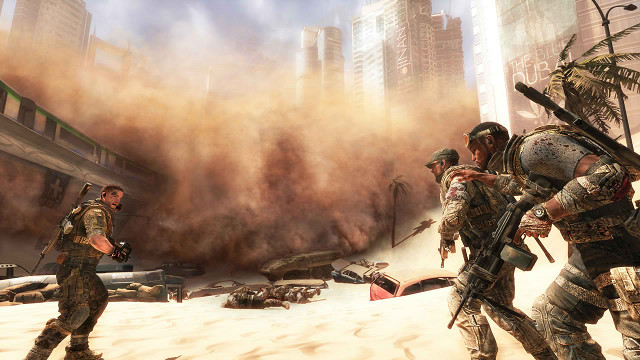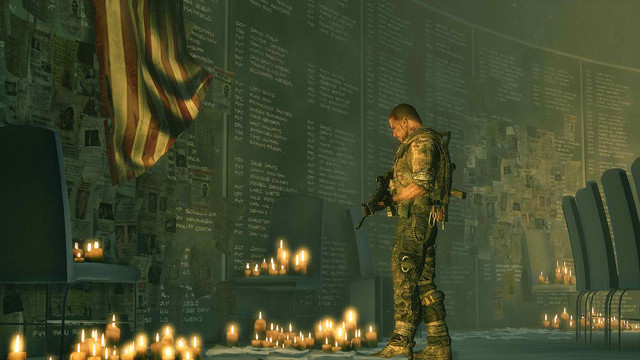SUMMARY
This is AI generated summarization, which may have errors. For context, always refer to the full article.

Available formats: XB360, PS3, PC
Reviewed on: PS3
Rating: M for Mature
MANILA, Philippines – The Spec Ops series of military-themed shooters goes as far back as 1998. The early games were notable for their realistic approach while making important contributions to the tactical shooter genre.
The series went on a decade-long hiatus after the release of “Spec Ops: Airborne Commando” for the PlayStation in 2002. “Spec Ops: The Line” is the latest game in the series for the current generation of consoles and the PC.
Unlike high-profile military shooters like the “Call of Duty” and “Modern Warfare” series, “Spec Ops: The Line” almost fell through the cracks when it was released in 2012. The game was largely overshadowed by conventional shooters such as the formula-laden “Black Ops II.”
Although steeped in some of the conventions of the first/3rd person shooter genre, “Spec Ops: The Line’s” most stunning innovation is the inclusion of ambiguity and morality. In other games, the decision to take another life and eliminate the opposition can be very clear cut. “Spec Ops” hews closer to real life and makes it an emotional struggle to fire each shot.
For this reason alone, the game deserves closer scrutiny.

“Spec Ops: The Line” puts players in the sand-filled combat boots of Captain Martin Walker. By his side are Lt. Alphonse Adams and Sgt. John Lugo. The 3 form a Delta Force contingent sent on a reconnaissance mission by the US government.
Walker and his team land on Dubai after it has been hit by a series of sandstorms of catastrophic magnitude. The sandstorms have laid to waste the once magnificent city and turned it into an arid wasteland. Most of the buildings are now nothing but crumbling hollow structures and the roads are littered with abandoned vehicles and dead bodies. Civil society has all but collapsed in the formerly prosperous emirate as quiet chaos threatens to engulf everything else.
As the player-controlled character, Walker arrives in a devastated Dubai to find out what really happened to the 33rd Battalion of the US Army and their commanding officer, Lieutenant Colonel John Konrad who is believed to have gone in hiding. The battalion was stationed in the city after the storms hit, and the last message from Konrad was an announcement that the evacuation was a complete failure.
As the story begins, a group of insurgents engage Walker in a firefight. He later learns that they are holding hostage a squad of soldiers from the 33rd Battalion. The soldiers are accused of committing various atrocities on civilians in order to maintain order. It is later revealed that the CIA is covertly involved in the takedown of the 33rd.

The game is played from a 3rd person perspective. As Capt. Walker, the player can carry two weapons such as standard assault rifles, submachine guns, grenade launchers, shotguns, pistols, and sniper rifles. Ammo is scarce, so the player is encouraged to conserve ammo.
Walker can also carry grenades and smoke bombs. His two squadmates can be ordered to fire on targets but their AI is adequate enough for them to survive in a firefight without intervention. Should they fall in a fight, the fallen team member can be revived by the player or another squad mate.
The game’s story pays an obvious literary homage to Joseph Conrad’s “Heart of Darkness.” An additional connection can be made to Coppola’s “Apocalypse Now” which was also inspired by the short novel. “Spec Ops” has updated the movie’s Vietnam War-era setting to a more contemporary scenario.

In the haze of the desert heat, it is becoming difficult for Walker to tell friend from foe. A brief but brutal firefight with 33rd soldiers makes him realize that there is no easily discernible enemy as he fires at American soldiers who were just probably following orders. Each encounter physically and psychologically chips away at Walker, Adams, and Lugo.
Walker suffers permanent injuries after each firefight such as severe burns on his face. Nolan North, who is more known as the voice of Nathan Drake in the stellar “Uncharted” series of adventure games, is the voice of Captain Walker. His performance as the battle weary Walker is pitch-perfect in contrast to the cocksure rapscallion that is Drake.
“Spec Ops” has created combat scenarios with moral choices that rub off on the player. If engaging in gunfights in “Modern Warfare” make you feel like a gung-ho action hero, “Spec Ops” makes you question why such violence is necessary.
One of the most memorable sequences in “Modern Warfare 3” is when you are firing weapons from an AC-130 gunship using a targeting scope. The targets appear like small scurrying insects on the viewfinder. This realistic yet detached view of war presents a chilling aspect of contemporary warfare that looks exactly like a video game.
Watch the game’s trailer here [You will be asked to confirm your age]
Although it has become some sort of a cliché, the “horrors of war” become more evident after Walker launches an attack on a 33rd Battalion stronghold in the name of liberating the city. Thinking that it is purely a military target, he uses a long-range weapon called white phosphorus on the enemy.
White phosphorus is the name given to a controversial class of incendiary weapons that can cause fatal chemical burns on human targets. Despite the strong objections of his other teammates, he marks the targets on a laptop and fires the weapons at them. After incinerating almost everything in a spectacular blaze, Walker descends on the camp only to discover the atrocity that he has committed.
A dying soldier tells Walker that there were also civilians who were rescued by the 33rd living in the camp. Walker doesn’t believe this until he sees numerous smoldering corpses of innocent evacuees.
It is at this point in the game that “Spec Ops” goes beyond the visual realism that has become the high point in most shooting games. The moral realism in “Spec Ops” is a rare occurrence in shooters.
If previous games have all trained us to shoot first then bask in the glory later, “Spec Ops” teaches us that there is a steep price to pay for using weapons of mass destruction. Even if they are only used in a video game. – Rappler.com

Ed Geronia Jr. is the chief information officer of Sari Software Solutions. He is the former editor in chief of PC Gamer magazine and Games Master Philippines magazine, and former associate editor of T3 Philippines magazine.
Add a comment
How does this make you feel?
There are no comments yet. Add your comment to start the conversation.